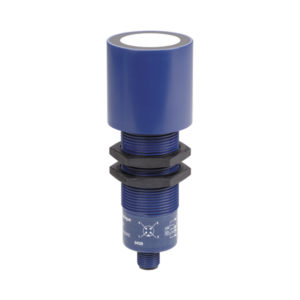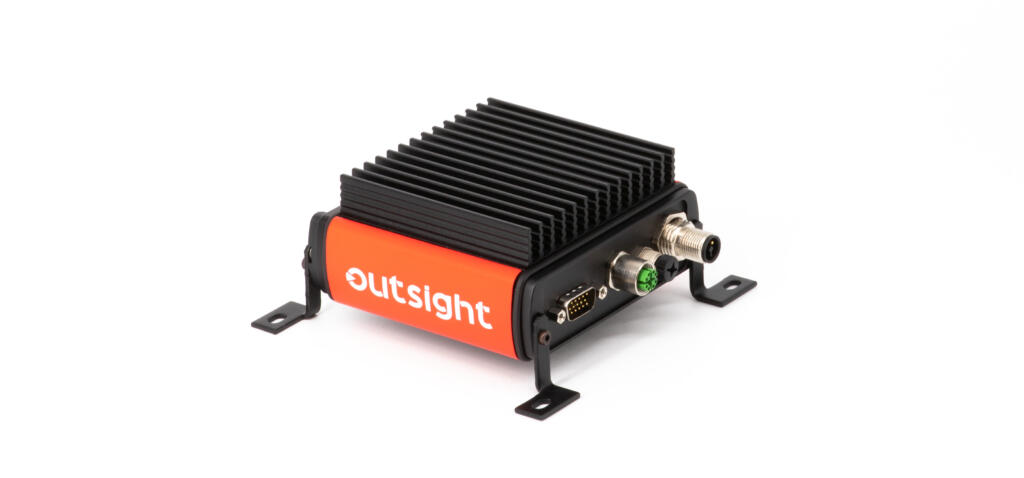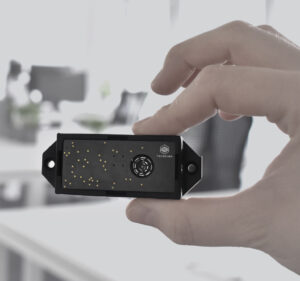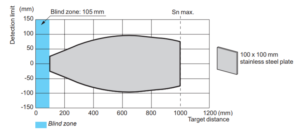Ultrasonic Sensors: More Than Just Parking

Driverless cars are the sum of many moving parts (literally), all working seamlessly together. To really ‘see’ the road ahead, unmanned vehicles need a series of different sensors with complementary skills. It’s a team effort – due to their physical properties, no single sensor can do the job on its own.
Autonomous vehicles rely on a range of sensors to perceive their environment: not just cameras but radar, LiDAR, sonar, computer vision and HD maps. Ultrasonic sensors, traditionally associated with parking, will come to have a much wider range of uses as autonomous driving systems develop.
What is an ultrasonic sensor?
Ultrasonic sensors are active sensors. Much like radar and sonar, ultrasonic transducers evaluate their targets by measuring reflected signals. Using ultrasonic waves, these sensors gauge distance between objects by measuring the time between emission and reception. This makes them particularly good at detecting approaching obstacles within close range – it’s why they make such good parking sensors.
The transducer generates a high-frequency sound wave (above 18 kHz), converting electrical energy into sound and then back again. Certain objects reflect ultrasonic sound waves in different ways: while solid materials like metal, plastic and glass reflect sound well, soft materials like fabric tend to absorb the waves. Therefore accuracy can vary; ultrasonic sensors excel at detecting solid hazards like traffic cones and barriers.
How ultrasonic sensors work
The best example of how ultrasonic sensors work comes from nature, through a process called echolocation. Bats and dolphins use this process to create sound waves that they send out and bounce back from the environment. The subsequent time it takes to return tells you the proximity of surrounding objects.
In ultrasonic sensors, the transducer vibrates, emitting ultrasonic pulses that travel in a cone-shaped beam. An ultrasonic sensor’s range is determined by the transducer’s vibration frequency: the higher the frequency, the shorter the range. Long-range ultrasonic sensors, therefore, work best at lower frequencies.
The angle of an object, as well as its composition, can affect the accuracy of the reading. Flat surfaces placed at a right angle to the sensor give the longest sensing range. As the angle varies, so does its accuracy. For this reason, some sensors come with different modes to overcome these shortfalls.
Ultrasonic sensor modes

OsiSense Ultrasonic Sensor
Telemecanique Sensors’ range of ultrasonic sensors have three distinct modes to enable more accurate detection. These modes are:
- Diffuse mode – where the object reflects the ultrasonic wave back to the sensor. Best suited to flat objects perpendicular to the ultrasonic beam.
- Reflex mode – where the sensor remains in a permanently detecting state, seeking objects that break the ultrasonic beam. Best suited to finding soft objects that would normally absorb the ultrasonic wave.
- Thru-beam mode – where the transmitter permanently transmits ultrasonic waves to the receiver, seeking objects that break the ultrasonic beam. Best suited to the detection of small objects.
Advantages and limitations
Each type of autonomous vehicle sensor has its own ideal function. Ultrasonic sensors are a great fit for short-range applications, but not for others. Here are the pros and cons:
Pros
- Compact and reliable – no moving parts
- Unaffected by object colour or transparency
- Unaffected by atmospheric conditions like dust, rain and snow
- Unaffected by light levels – works equally well in darkness
- Excellent at measuring distance to a parallel surface
Cons
- Accuracy affected by angle and soft materials
- Accuracy affected by rapid shifts in temperature
- Limited detection range – our long-range sensors have a maximum range of 8m
Beyond parking
Ultrasonic sensors are extremely common in passenger cars for parking systems. Usually found on the bumpers, they alert the driver to obstacles behind or in front of the car, activated while the car is in reverse gear or moving slowly to help avoid parking scrapes.
As the industry shifts its focus to autonomous driving systems, ultrasonic technology can take us further, with longer detection distances providing a 360° view of obstacles in the immediate vicinity – provided the car isn’t travelling at high speed. To give an example, Tesla’s Model S and X feature 12 long-range ultrasonic sensors that provide close range obstacle detection capability for their AutoPilot feature (although this is a long way from fully self-driving – there will be no fully autonomous vehicles on the road in 2019).
We aim to provide superior customer experience and the best value for our customers, working with reputable ultrasonic sensor suppliers like Toposens, Neobotix and Telemecanique Sensors. Our goal is to promote innovation in all its forms, making sophisticated technology available in the smaller volumes needed for R&D – at prices that don’t take the biscuit.










